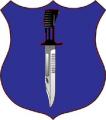Forgive me for not reading through the article, but MBTs exist to exploit penetrations and to provide a mobile "fist" to fight blitzkrieg. The also provide a type of defensive mobility that other platforms lack.
Specialist anti-tank weapons tend to be inflexible and not very survivable in a conventional battlefield. BTW, in the time it takes a TOW or SAGGER missile to fly to its' target at 3000 m, a well-trained tank crew can hit and kill 2 and possibly 3 targets at the same range.
Tanks suck at accompanying infantry. It doesn't mean they cannot do it, it's just not a very optimal use of their capabilities and exposes their greatest vulnerabilities. The converse is not true, of course, as infantry accompanying tanks is like peanut butter and jelly.
BTW, does Storr not even know how to spell Guderian?
IMO, anyone who concentrates on one system to make a battlefield argument is a naif, an amateur, and should not be taken seriously.









 ] of the missile warhead section by frying its electrics). Future systems will be capable of engaging hard core penetrators like the HVM or APFSDS penetrators (by knocking them of course rather than destroying them). The real problem are TTPs for the activation of active armour in environments of heavy force density such as FIBUA where infantry will be in intimate support. Will probably necessitate greater dispersion of vehicles in open terrain and the deployment of single vehicles well clear of infantry in urban terrain (sort of like mobile pillboxes). Consequently, I don't see future MBTs weighing as much as the monsters around nowadays (65 tonnes in some cases).
] of the missile warhead section by frying its electrics). Future systems will be capable of engaging hard core penetrators like the HVM or APFSDS penetrators (by knocking them of course rather than destroying them). The real problem are TTPs for the activation of active armour in environments of heavy force density such as FIBUA where infantry will be in intimate support. Will probably necessitate greater dispersion of vehicles in open terrain and the deployment of single vehicles well clear of infantry in urban terrain (sort of like mobile pillboxes). Consequently, I don't see future MBTs weighing as much as the monsters around nowadays (65 tonnes in some cases).






Bookmarks